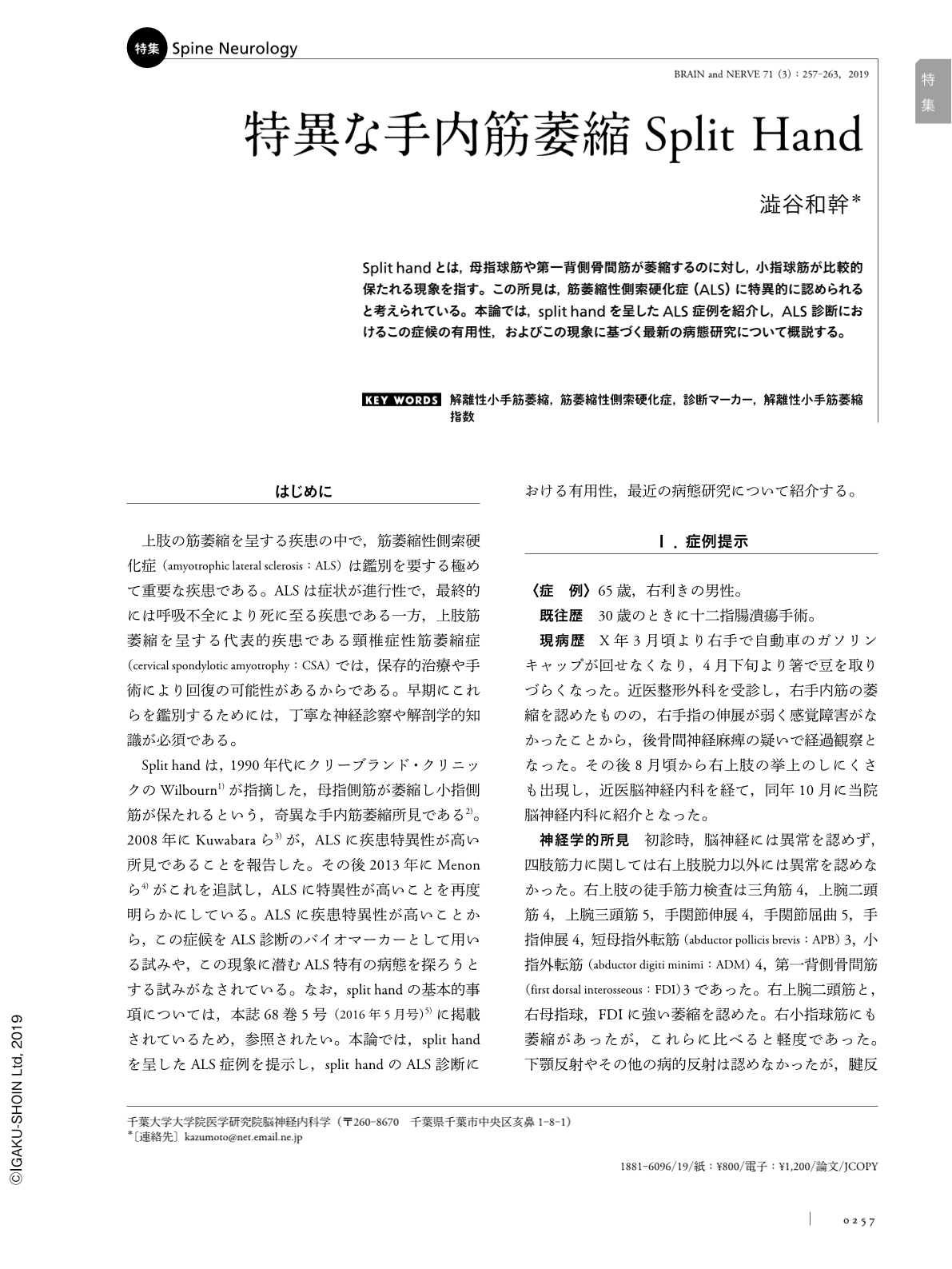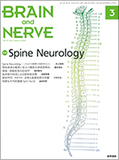Japanese
English
- 有料閲覧
- Abstract 文献概要
- 1ページ目 Look Inside
- 参考文献 Reference
Split handとは,母指球筋や第一背側骨間筋が萎縮するのに対し,小指球筋が比較的保たれる現象を指す。この所見は,筋萎縮性側索硬化症(ALS)に特異的に認められると考えられている。本論では,split handを呈したALS症例を紹介し,ALS診断におけるこの症候の有用性,およびこの現象に基づく最新の病態研究について概説する。
Abstract
When examining a patient with upper limb atrophy, amyotrophic lateral sclerosis (ALS) should be considered an important disease, because ALS is a devastating disease, and entirely different from cervical spondylotic amyotrophy. The split hand symptom is a very important indicator for diagnosis, because this symptom has been recognized as being specific to ALS. In the split hand symptom, the thenar and first dorsal interosseous (FDI) muscles are preferentially affected. In contrast, the hypothenar muscle (abductor digiti minimi, ADM) is relatively preserved. FDI and ADM muscles are innervated by the same C8/Th1 spinal segments and the same ulnar nerve; however, in this symptom, these muscles are affected differentially, indicating a potentially specific pathological mechanism. In this article, an ALS patient with split hand has been presented. In addition, recent advances in ALS research, the utility of the split hand symptom for diagnosing ALS, and the pathological mechanism of the split hand symptom, have been introduced.

Copyright © 2019, Igaku-Shoin Ltd. All rights reserved.


